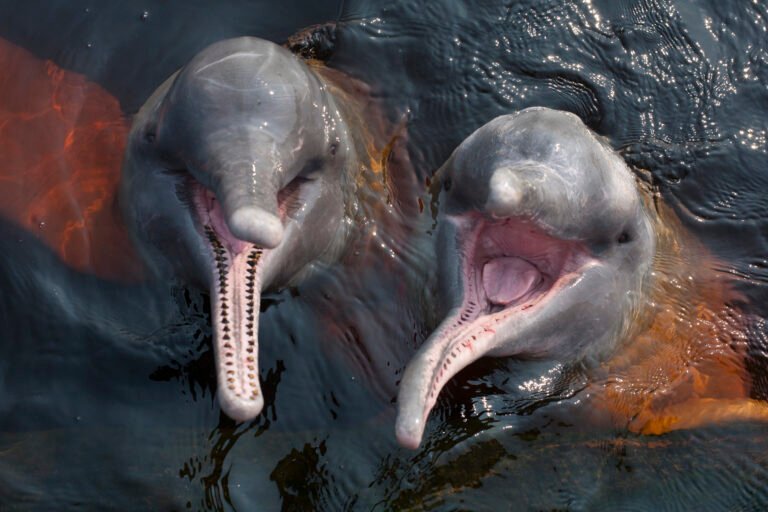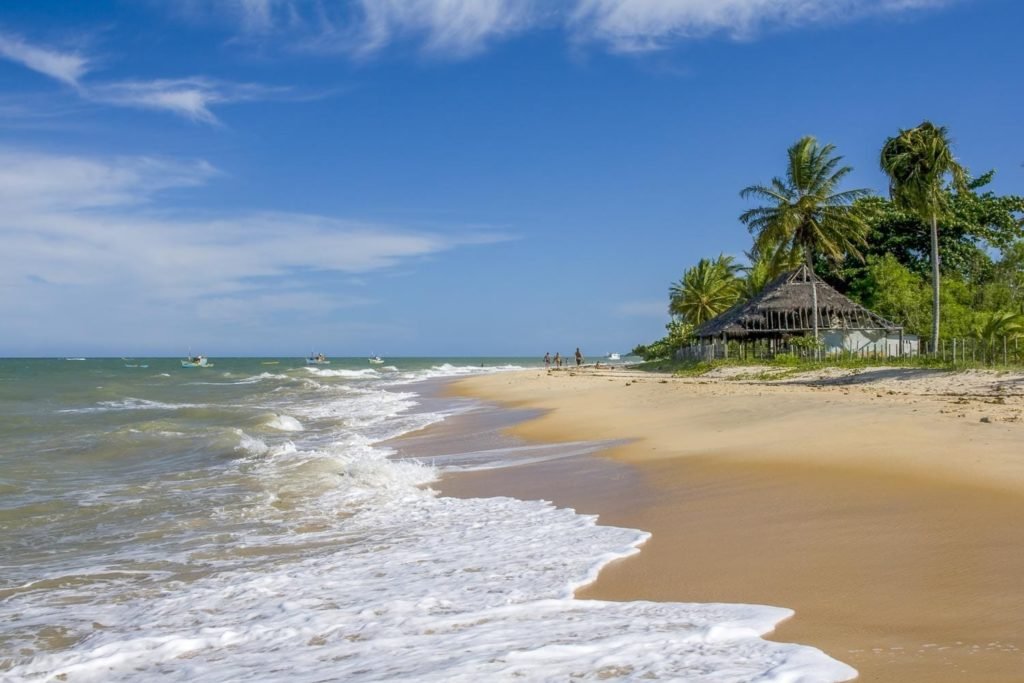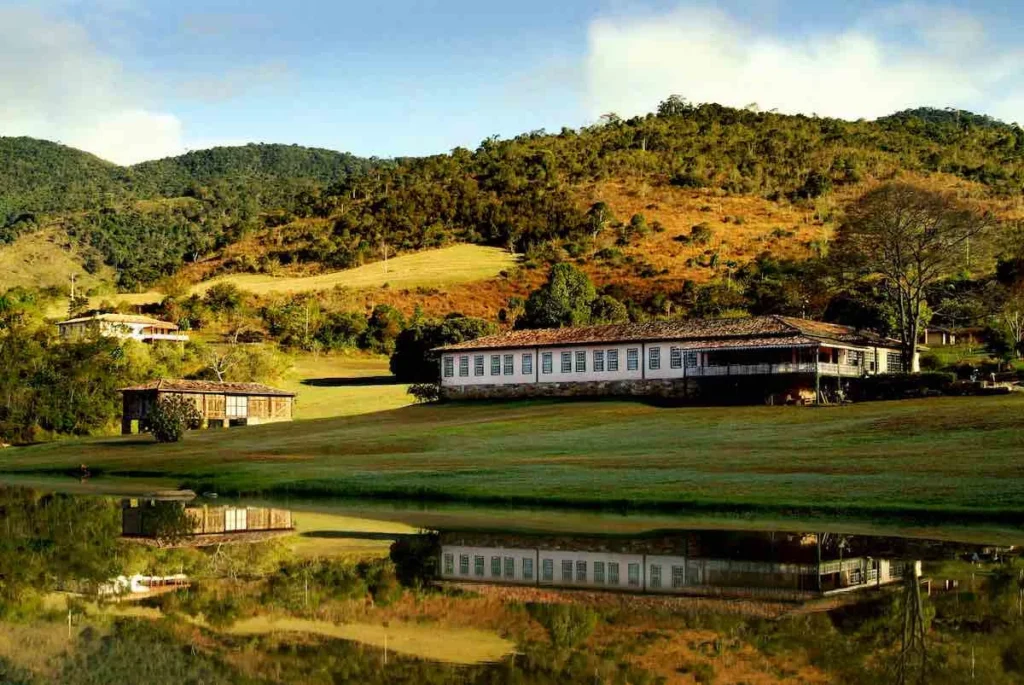Page Menu
Smile. You’ve LANDED in Brazil.
As the world’s fifth largest country, Brazil dominates nearly half of South America. With a land area of over five million square miles, it spans four time zones and surpasses the size of the contiguous 48 United States. Brazil’s territory boasts diverse topography, including mountains, plains, rainforests, islands, and a stunning 4,600-mile-long Atlantic coastline lined with white and golden beaches.
CAPITAL BRASILIA
LANGUAGE PORTUGUESE
CURRENCY REAL
READ GABRIELA, CLOVE & CINNAMON
SIP & TASTE CAIPIRINHA & FEIJOADA
EXPERIENCE ENDLESS BEACHES OF BAHIA
Start your journey today
Speak with one of our travel designers and let us create a tailored itinerary for you.
Destinations
Where to go in Brazil

Rio de Janeiro
At the base of Sugarloaf Mountain, Rio de Janeiro was Brazil’s capital for 200 years, and it still remains one of the largest–both in population and personality. Whether you spend a day at one of the city’s many beaches, stroll through its museums, make your way up to Christ the Redeemer, or dance the night away in one of its numerous night clubs, it’s a friendly, fun place you’ll never forget!
Read More

Salvador da Bahia
Brazil’s original capital city features Baroque churches, pastel-hued mansions, and cobbled streets, making a magical, enchanting locale you’ll never want to leave! The city truly comes to life with its rich Afro-Brazilian culture, which is infused in the local cuisine, music, and dance.
Read More

Pantanal
The Pantanal is the world’s largest inland wetland, covering 195,000 square miles. In this basin, you’ll find the western hemisphere’s largest concentration of wildlife, including caiman, giant anteaters, maned wolves, jaguars, tapirs, and roughly 1000 bird speces, including macaws, kingfishers, and storks. It’s a fantastical display of natural beauty you can’t find anywhere else.
Read More
Adventures You Can't Miss

Let Loose at Carnaval
Carnaval is essentially Brazil’s version of Mardi Gras–the celebration before Ash Wednesday. Rio de Janeiro’s Carnaval is by far the most famous, with incredible costumes, parades, and a wild atmosphere of fun and letting loose. But no matter where you are in Brazil, the infectious spirit of Carnival will find you!
Read More

Relax in Brazil’s Paradisiacal Beaches
Did you know some of Brazil’s beaches are perpetually crowd-free? Trancoso is the perfect Brazilian Beach Town escape. This small fishing-village beach town provides a true escape, providing precious tranquility and splendid isolation paired with world-class design talent.
Read More

Spot Pink Dolphins in the Brazilian Amazon
Deep into the Brazilian Amazon rainforest, you’ll find a sight you won’t see anywhere else–pink dolphins! Observing these shockingly pink, playful dolphins up close is an absolute thrill. After seeing these wonderful animals, top off your day with a sunset swim at a white-sand river beach, a nightcap, and the sounds of the forest.
Read More

See The Breathtaking Iguacu Falls
The largest waterfall in the world is nestled in Brazil’s southeast subtropical forest, creating a natural border with Argentina. Nature lovers can enjoy a hike up to view the falls, get a different perspective with a boat tour of the area–or even hop in a helicopter for a birds-eye view of one of Brazil’s many UNESCO world heritage sites.
Read More
Luxury accommodations in Brazil
Brazil’s hospitality scene is as diverse and captivating as its landscapes. Whether you’re looking for a cosmopolitan retreat in the heart of a bustling city or a serene escape nestled amidst verdant vines, Brazil boasts an array of luxury accommodations to enhance your travel experience.
Albums & Stories
We have meticulously curated an exquisite collection of all the essential information and sought-after insights to help you envision Brazil as your ultimate luxury travel destination. Whether you seek refined tips, exclusive packing lists, captivating interviews, or awe-inspiring photographs, our comprehensive compilation encapsulates everything about this remarkable country.
FAQ
What is the best time to visit Brazil?
Wondering about the best time to visit Brazil? It’s a question that deserves careful consideration of the location, seasonal climate, and popularity with other travelers.
In general, the warmest months (December to March) are also the wettest. The winter season months of May to September tend to have fewer visitors, good climate, and better values. Many of our clients go back year after year; Brazil tends to leave visitors with a strong sense of saudade – nostalgic longing to return.
What language is spoken in Brazil?
Brazil is one of the few South American countries (apart from Guiana, French Guyana, and Suriname) that have an official language different than Spanish. The official and predominant language in the country is Portuguese.
About 5% of Brazil’s population has some knowledge of English, and only 1% speak it fluently. English is spoken more often in locations frequented by foreign visitors or larger cities. LANDED can offer bilingual guide services to ensure you don’t miss a single detail of the rich cultural information shared during your travels.
Besides Portuguese, more than 160 languages and dialects are spoken by the Indigenous peoples in Brazil today.
What should I pack for Brazil?
What to pack for your trip to Brazil depends on which destinations you’ll visit, how long you’ll be away, what you’ll be doing in Brazil, and the time of year.
Still, here are some essentials to help you get started:
- Passport. Lock the original in the hotel safe and keep a copy (say, a photo of the passport’s photo page) with you at all times.
- US cash in small denominations (clean, un-torn bills). These are widely accepted as tips. Local currency can be obtained at hotels and through ATMs.
- Credit & ATM cards. ATMs are available and major credit cards are accepted at most restaurants and hotels. Please confirm your travel dates and destinations with your card issuers before you leave the country.
- Airline flight information
- Camera, batteries, & data cards (or film, if your hands are occasionally scented by fixer or selenium)
- Electrical adapter, universal surge protector, & power strip. In most locations, Brazil uses offset three-pin plug types (C and N). Brazil operates on 127/220V supply and 60Hz.
- Daypack or small backpack
- Sun protection (sunblock, sunhat, & sunglasses). The sun in the tropical regions can be intense.
- Insect repellant (higher quality repellants—especially those with DEET—can be difficult to find locally)
- Anti-itch antihistamine spray (e.g. Benadryl spray)
- Prescription medications
- Rain jacket (or rain repellent shell)
- Swimwear
- Light, informal clothing for dining and hotel or in cities (it’s amazing how versatile a charcoal grey sweater can be). In the evening locals usually dress smart casual or business casual but some restaurants are more formal.
- Comfortable walking or hiking shoes
How safe is Brazil?
Brazil is generally quite safe; however, common sense precautions are still important.
Rio de Janeiro and Sao Paulo are some of the largest cities in the world; big city awareness is highly recommended. Bag snatchers and pickpockets target public transportation hubs and tourist areas. As a general rule, you should not be out in the streets alone after dark. Stay in well-lit areas and be aware of your surroundings. Most incidents occur in the street. Keep your travel documents (e.g. passports) in the hotel safe or concealed in a zippered pocket. Leave that flashy wristwatch at home or in the hotel security box. Your guides and the hotel concierge can provide additional guidance.
In rural areas and national parks, follow your guide’s advice. Stick together. Secure and be aware of your valuables. These regions are best explored in the company of an expert local guide.
Is Brazil a good destination for kids?
Yes. You knew we’d say so. But that’s not a sales pitch. It’s a realistic appraisal by parents who have traveled to Brazil with their own children—parents who are experts on travel in Brazil but who, like you, once took their families to Brazil for the first time. We’ve taken them surfing in Buzios, market and museum-hopping in Sao Paulo and Rio, and riding in the sierra of Minas Gerais.
Brazil is family-friendly; young children are welcome in most hotels and restaurants. Teens and tweens have most of the same options their parents have: hiking, biking, kayaking, surfing, and multi-sport outings. Many of those activities can be adapted for younger children, or we can pair off into groups based on desired levels of activity—one parent and guide per group. Everyone can enjoy cultural interactions, cooking classes, market tours, picnics, sailing, wildlife viewing, fishing, and river trips.

































